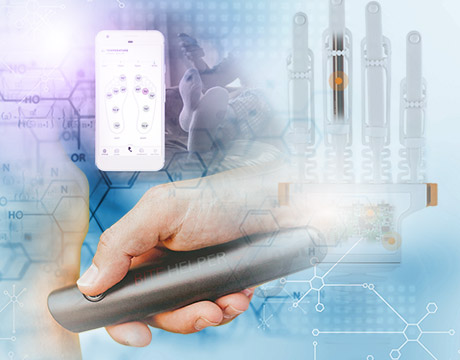5 Innovative Medical Technologies for 2018, Part 2
5 Innovative Medical Technologies for 2018, Part 2


Part 1 of “5 Innovative Medical Technologies” showcased the latest technologies for personal fitness, wellness, and health monitoring on display at the 2018 edition of the Consumer Electronics Show, held January 9-12 in Las Vegas, NV. Among other innovations, devices for diabetes monitoring and bug repellents were highlighted. Here, we look at devices for stroke rehabilitation, proper hydration, and more, all of which won recognition in the CES Innovation Awards showcase.
Different Stroke in Neurorehabilitation
In the United States, stroke is the third-leading cause of death and the number 1 cause of serious long-term disability, striking 795,000 people every year. The tragedy of stroke’s high death rate is compounded by the hundreds of thousands of people every year who survive their stroke but are left with life-altering physical or cognitive disabilities requiring extensive rehabilitation. Thanks to advances in the study of neuroplasticity – the brain’s ability to rewire itself to restore lost function – researchers are making strides in technologies that help patients regain capabilities faster. Neofect, a company with several such innovations in its portfolio, has developed the RAPAEL Smart Pegboard, a gamified training tool designed to help stroke patients redevelop grasp and dexterity. The digital rehabilitation device uses high-intensity LEDs and audio cues to help users perform game-like exercises requiring the placement of pegs into specific holes on the board. Games that require memorization, pattern recognition, fast reflexes and hand-eye coordination are included.
Extreme Prevention
Another product designed to help diabetes patients keep on top of their peripheral nerve and blood vessel health was featured in the CES Innovation Award showcase. The Neurostylus is a device-app combination people with diabetes can use to detect loss of sensation in their extremities. Frequent monitoring of sensation could help detect the early signs of neuropathy – a common diabetes complication causing severe nerve damage and poor circulation. The device connects to a smart phone, on which the user selects from a menu of test modes. To operate the device, the user places the Neurostylus in contact with the targeted site on the body and begins the test, which directs pre-selected vibration frequencies to the targeted site. When the user stops feeling the vibrations, he or she stops the test and the results are stored on the smart phone app for physician review.
Also for You: Find out how researchers are eliminating insulin injections
Drinking Solution
Taking the idea of proper hydration to a new level, LifeFuels has developed a personalized beverage technology that enables active types to concoct personalized all-natural health drinks on the go. The system comprises a reusable bottle equipped with a “near-medical-grade” dispensing system, an assortment of FuelPods containing flavored drink concentrates, and a smart phone app that helps users track hydration and nutrient levels as well as other data from wearable devices. To replenish the bottle, the user fills it with water and then uses the app or a built-in button to dispense the desired flavorings and adjust the strength or taste of the mixture.
Missed Part 1 of "5 Innovative Medical Technologies for 2018"? Read it here.
Michael MacRae is an independent writer.





